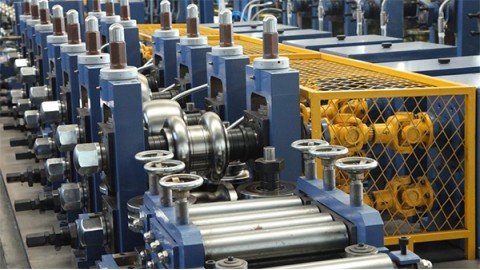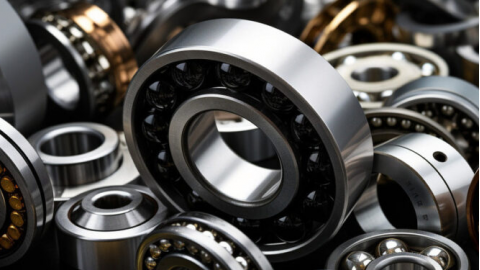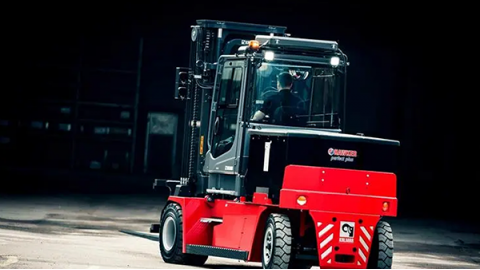Introduction
This article offers comprehensive insights into pressure switches. Continue reading to explore:
- The definition and working principle of pressure switches
- Key components of pressure switches
- Various types of pressure switches
- And more...
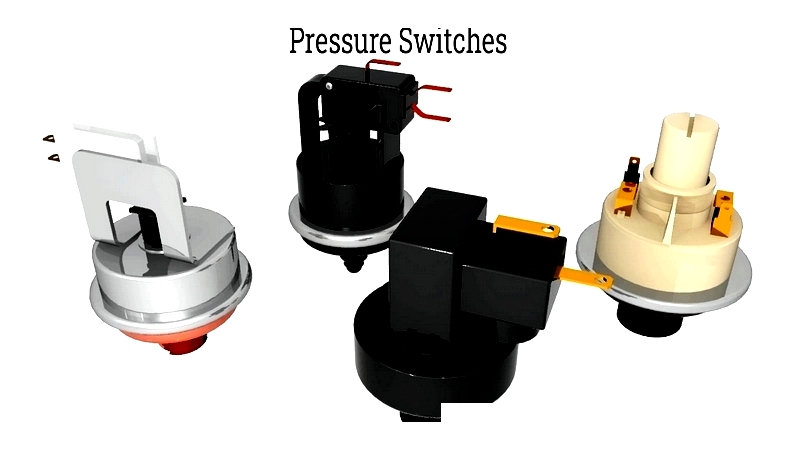
Chapter 1: Understanding Pressure Switches
A pressure switch is a mechanical or electronic device that activates when fluid, air, or gas pressure reaches a preset level. These switches incorporate components like bourdon tubes, pistons, diaphragms, or membranes that respond to system pressure variations.
The switch's components connect to internal contacts that open or close when sufficient pressure is applied. While pressure detection methods vary, switches mainly fall into electromechanical or electronic categories.
These devices play crucial roles across industries, particularly in compressed gas systems, HVAC systems, instrumentation, and pumping applications.
How It Works
A typical pressure switch features a piston with one side exposed to fluid pressure and the other to atmospheric pressure. The fluid pressure acts against a preloaded spring, with the piston designed to move only when reaching a specific pressure threshold. An adjustable setpoint screw modifies the spring tension to alter the activation pressure.
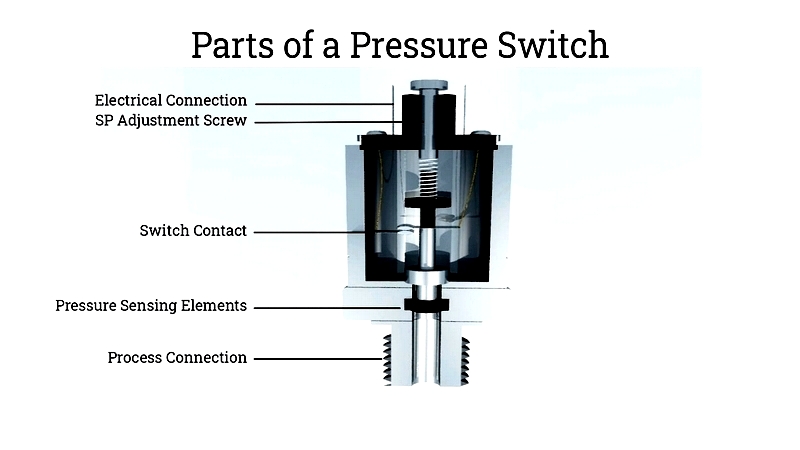
Cut-in and Cut-out Mechanisms
Pressure switches operate between cut-in and cut-out pressures. In pump and compressor systems, the switch activates when pressure falls below a set level, triggering the motor to restore pressure. The switch doesn't deactivate immediately when exceeding the limit - a differential (hysteresis) prevents abrupt shutdown, allowing pressure to rise until reaching the cut-out level.
Chapter 2: Parts of a Pressure Switch
This chapter examines the main components of pressure switches - critical elements in industrial automation, fluid control, and safety systems. Understanding mechanical pressure switch anatomy is essential for process reliability and proper product selection. While designs may vary for specialized needs, the following components are typical in mechanical switches known for their durability and straightforward operation.
Process (Inlet) Port
The inlet port connects the switch to the process unit, allowing pressurized fluid entry. Typically installed on tank or pipe nozzles, these switches commonly use NPT threaded fittings in HVAC, water treatment, and industrial systems. Proper fitting selection prevents leaks and ensures compatibility with both pressure and material chemistry.
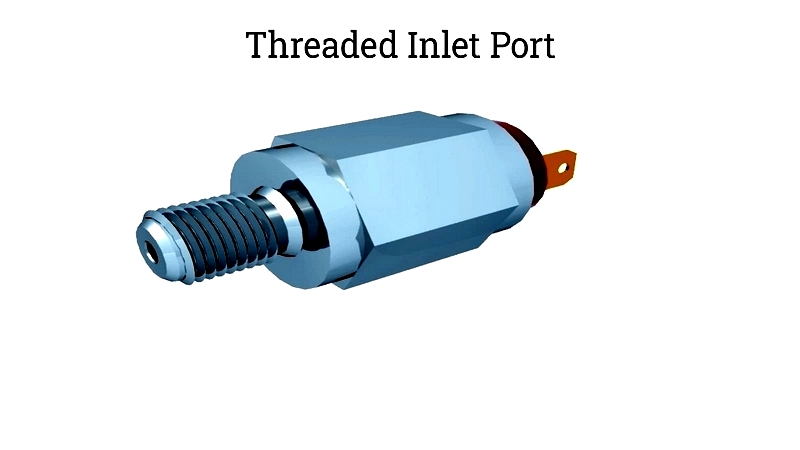
Pressure Sensing Element
Mechanical switches are classified by their pressure-sensing element (piston, bellows, or diaphragm) that responds to fluid pressure. The element's design translates pressure into measurable force, with larger areas requiring greater spring force. Minimal actuation force ensures sensitivity to setpoint changes, enabling precise pressure control in compressors, pumps, and safety systems.
Spring
The spring counteracts fluid force and is preloaded to match operating pressure. The switch activates only when process pressure exceeds spring resistance. Proper spring selection and calibration ensure reliable actuation points and long-term accuracy in pressure monitoring systems.
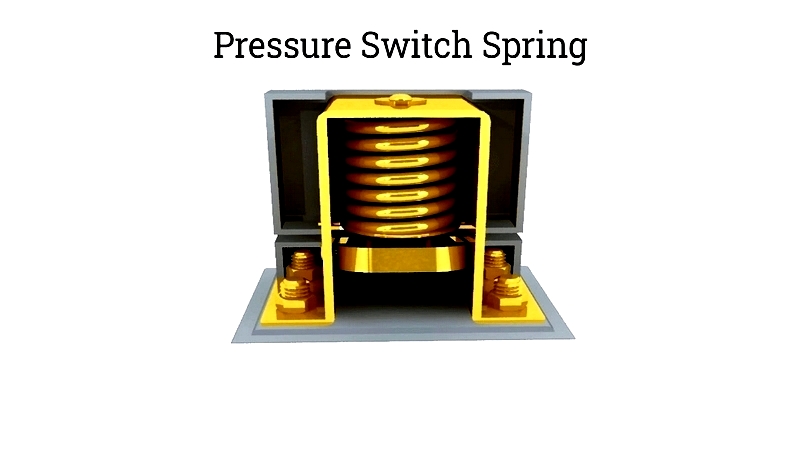
Setpoint Adjustment Screw
The setpoint adjustment screw, integrated with the spring, allows users to modify activation pressure. This adjustability supports field calibration for optimal system performance and safety compliance.
Differential
This adjustment controls the pressure differential (hysteresis), widening or narrowing the switch's operating range. Many systems feature dual-spring arrangements with adjustment screws to fine-tune pressure ranges, preventing rapid cycling and enhancing equipment longevity.
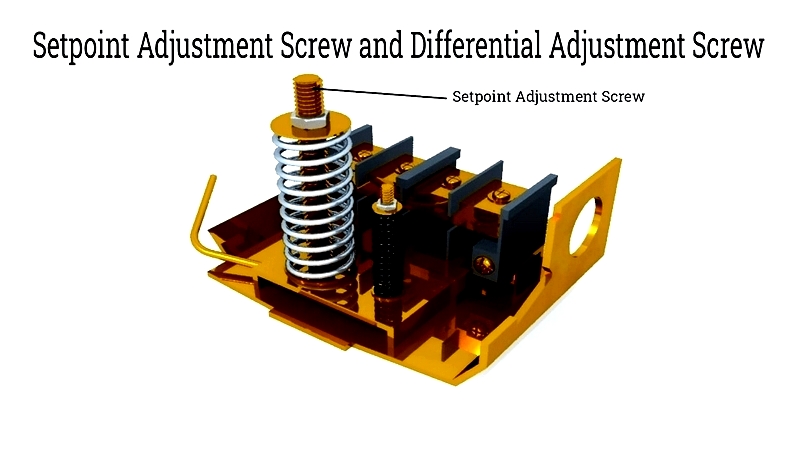
Diaphragm (Diaphragm-piston Assembly), Seals, and O-rings
The diaphragm and sealing components protect internal parts from process fluid contact, ensuring longevity and accuracy. Material selection depends on chemical compatibility, fluid type, and temperature requirements.
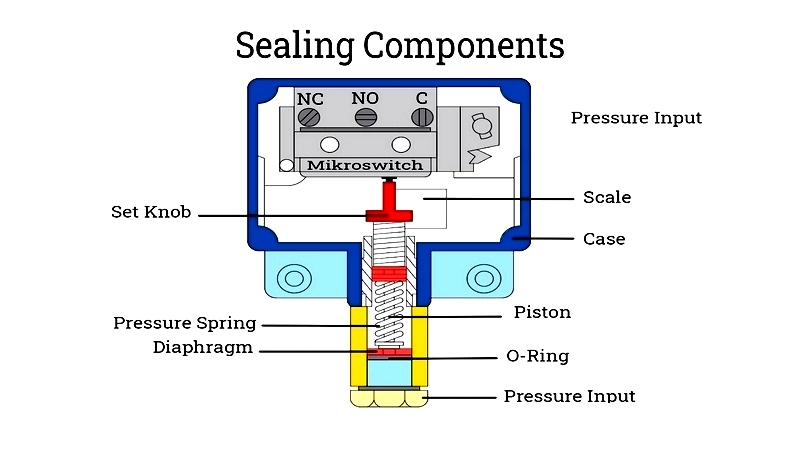
Nitrile or NBR (Buna-N)
Resistant to oils but vulnerable to ozone and ketones, nitrile offers cost-effective solutions for neutral fluids in industrial and HVAC applications (-30°C to 100°C range).
Ethylene Propylene Diene Monomer or EPDM
EPDM withstands high-temperature water/steam (up to 250°C) and resists ozone and chemicals, making it ideal for water systems and chemical processing.
Fluorocarbon or FKM (Viton)
Viton excels in harsh environments with resistance to petroleum, solvents, and high temperatures (up to 200°C), though unsuitable for ketones.
PTFE
PTFE handles extreme temperatures (up to 500°C) and aggressive chemicals, though less elastic than elastomers. Common in pharmaceutical and food processing applications.
Switch Housing
The switch housing provides mechanical and environmental protection. Proper selection of IP, NEMA, or ATEX ratings ensures suitability for specific environments and safety compliance.
Contacts
Contacts (NO, NC, or CO) made from conductive materials control circuit energization. NO contacts close at setpoint, NC contacts open, while CO switches offer both functions for complex circuits.
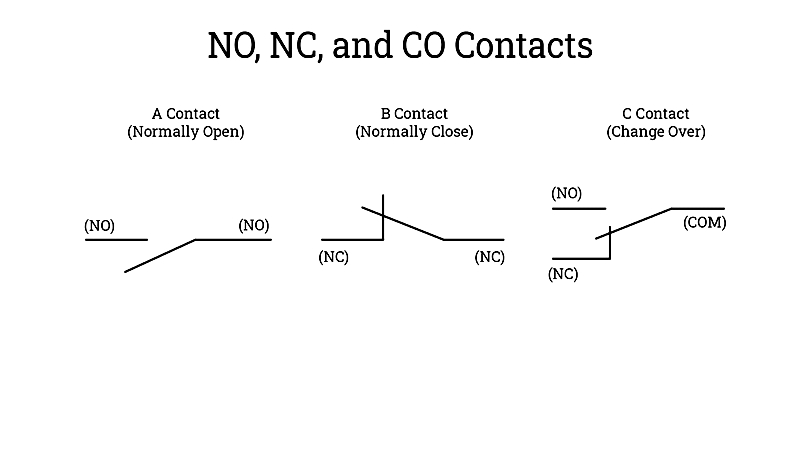
Terminals
Terminals connect control circuits to the switch, with nameplate markings guiding proper wiring. Corrosion-resistant materials maintain signal integrity for reliable operation.
Additional Factors in Pressure Switch Selection
Consider these factors when selecting pressure switches:
- Pressure range: Must cover system requirements including overpressure protection
- Media compatibility: Wetted parts must suit the fluid/gas
- Response time: Critical for equipment protection
- Electrical rating: Must handle circuit voltage/current
- Certifications: UL, CE, or CSA compliance for regulated environments
- Life cycle: Affects maintenance and downtime
By evaluating these technical aspects alongside component details, users can select optimal pressure switches for automation, protection, or fluid control applications. For assistance, consult specialized pressure switch manufacturers and suppliers.

